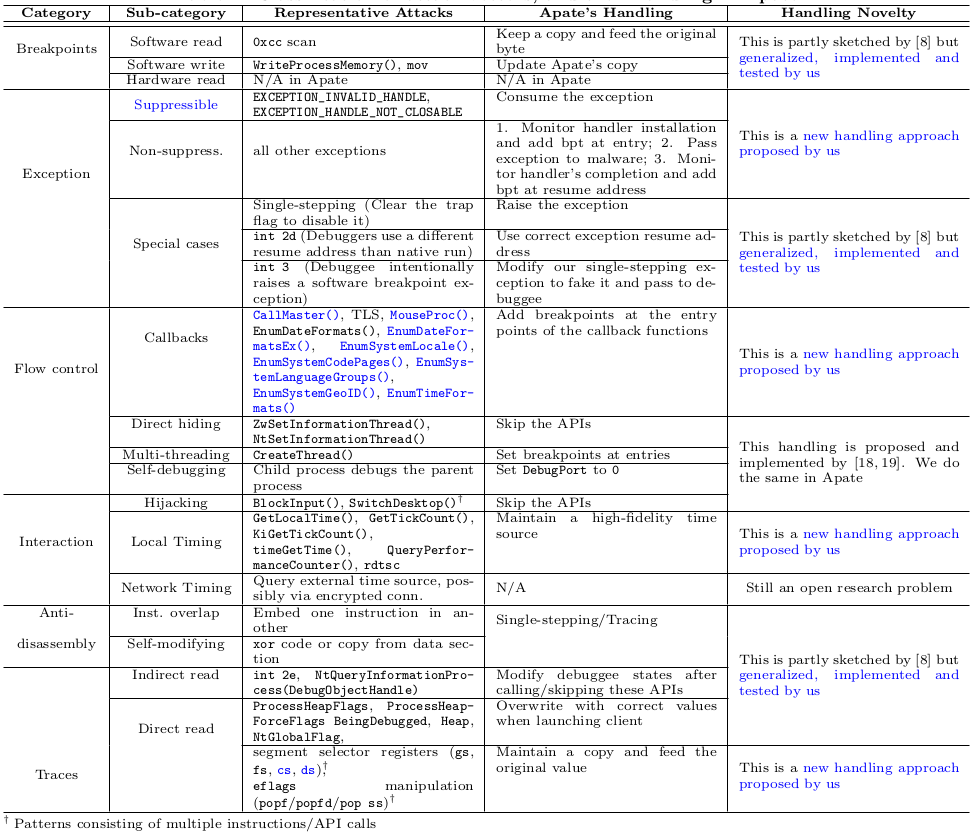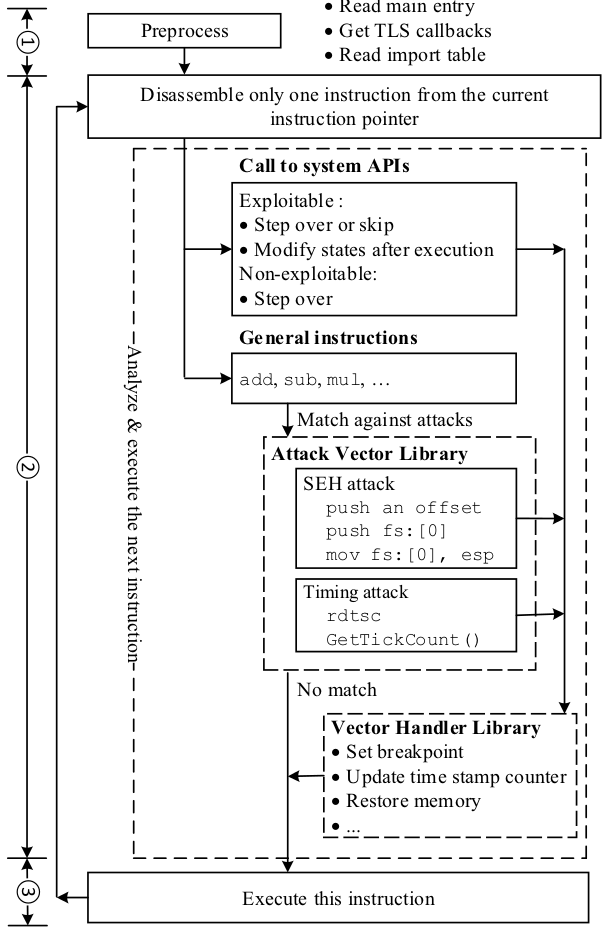
Malware analysis uses debuggers to understand and manipulate the behaviors of stripped binaries. To circumvent analysis, malware applies a variety of anti-debugging techniques, such as self-modifying, checking for or removing breakpoints, hijacking keyboard and mouse events, escaping the debugger, etc. Most state-of-the-art debuggers are vulnerable to these anti-debugging techniques.
We first systematically analyze the spectrum of possible anti-debugging techniques and compile a list of 79 attack vectors. We then propose a framework, called Apate, which detects and defeats each of these attack vectors, by performing: (1) just-in-time disassembling based on single-stepping, (2) careful monitoring of the debuggee's execution and, when needed, modification of the debugee's states to hide the debugger's presence.

